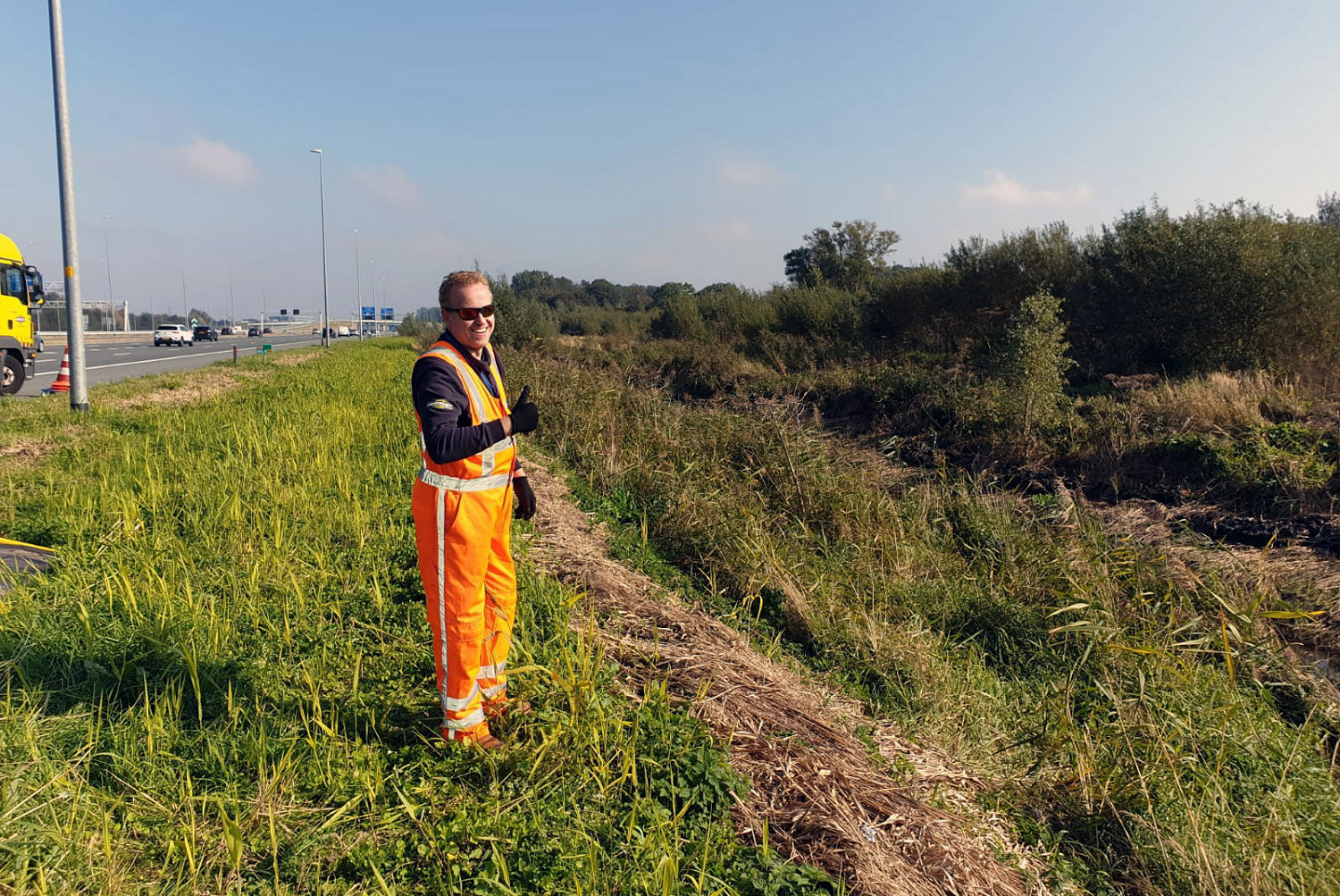A turbulent year
Monday 31 January 2022
After the tranquillity of 2020, 2021 was a year of new records. 153,337 recoveries were performed on IM roads, 7% up on the record set in 2019. An increase in the number of breakdown recoveries was particularly notable. 94,171 broken-down vehicles were removed from the hard shoulder and taken to a safe place. This was 16% more than the figure for 2019.

Bjorn Schipper of Bergnet recovering a car from a drainage ditch next to the A6 at Almere on 9 October 2021
There was also a record for the number of security callouts. IM recovery operators were called out on 5,173 occasions to secure the recovery site at which they were working. To date 2018 had topped the list, with 4,099 security callouts. The number of accidents on IM roads increased in relation to 2020, but remained a long way under the figure for previous years. IM recovery operators dealt with 20,641 accidents. That was up 12% on 2020, but lower than in any other year since 1999.

IM callouts from 2010 up to and including 2021 (Loze rit = Wasted trip, Onbeheerd voertuig = Unattended vehicle, Beveiliging = Security, Pechverplaatsing = Breakdown removal and Ongeval = Accident)
The police operations centres (control rooms) once again took a step backwards in terms of being a source of incident reports. In 2021, the police called IMN's National Central Reporting Point (LCM) on 10,893 occasions to report an incident on the primary road network. That was 23% down on 2020 and almost 60% below the number of incidents that were forwarded in 2017. This is a worrying trend, as motorists nearly always call the emergency number (112) to get help in the event of an accident. If the accident is serious, then the emergency services are the right people to call. If, however, nothing more than a recovery operator is required, there is a risk that the control room will not pass on the report of the incident to the LCM.

Floris Stalenhoef of Bergnet working for the Central Goods-Vehicle Reporting Point on the A27 at Almere, 5 May 2021
The gap left by the police is to some extent filled by the Systeem Electronic Detection of Accidents system (EDO). This self-learning system detects accidents using real-time traffic data from Flitsmeister. In 2021 it was on the spot more than 5,000 times, more than twice as much as in previous years. EDO reports result in false alarms slightly more frequently than reports received from the police and Rijkswaterstaat, but they are received, on average, five minutes earlier than the first mention of the same incident from one of the conventional sources referred to. That head start could mean that dangerous situations on the road are averted.
IM callouts 2021
| Callout type | 2021 | 2020 | Increase |
|---|---|---|---|
| Accident | 20.641 | 18.370 | 12% |
| Breakdown removal | 94.171 | 77.498 | 22% |
| Security | 5.173 | 3.581 | 44% |
| Unattended vehicle | 2.700 | 2.558 | 6% |
| Wasted trip | 30.652 | 24.423 | 26% |
| Main road network | 132.917 | 109.604 | 21% |
| Underlying road network | 20.420 | 16.826 | 21% |
| Police | 10.893 | 14.137 | -23% |
| Rijkswaterstaat | 110.560 | 87.557 | 26% |
| ANWB/Control centre | 26.607 | 22.463 | 18% |
| EDO/Flitsmeister | 5.277 | 2.273 | 132% |
| Total | 153.337 | 126.430 | 21% |
Stichting IMN observed the departure of three IM recovery operators in 2021: on 1 February, ABS Autoherstel Boekhorst in Lichtenvoorde sold its recovery operations arm to Iliohan in Borculo. On 1 July this was followed by Van Lierop in Bakel (NB), and on 1 December the curtain fell for Smits Kraan- en Sleepbedrijf in Haarlem. The latter business was one of the five largest IM recovery operators in the country. Smits was acquired by Bergnet in Amsterdam which, as a result, surpasses Van Eijck Mobility in Hulten as the largest IM recovery operator in the Netherlands.